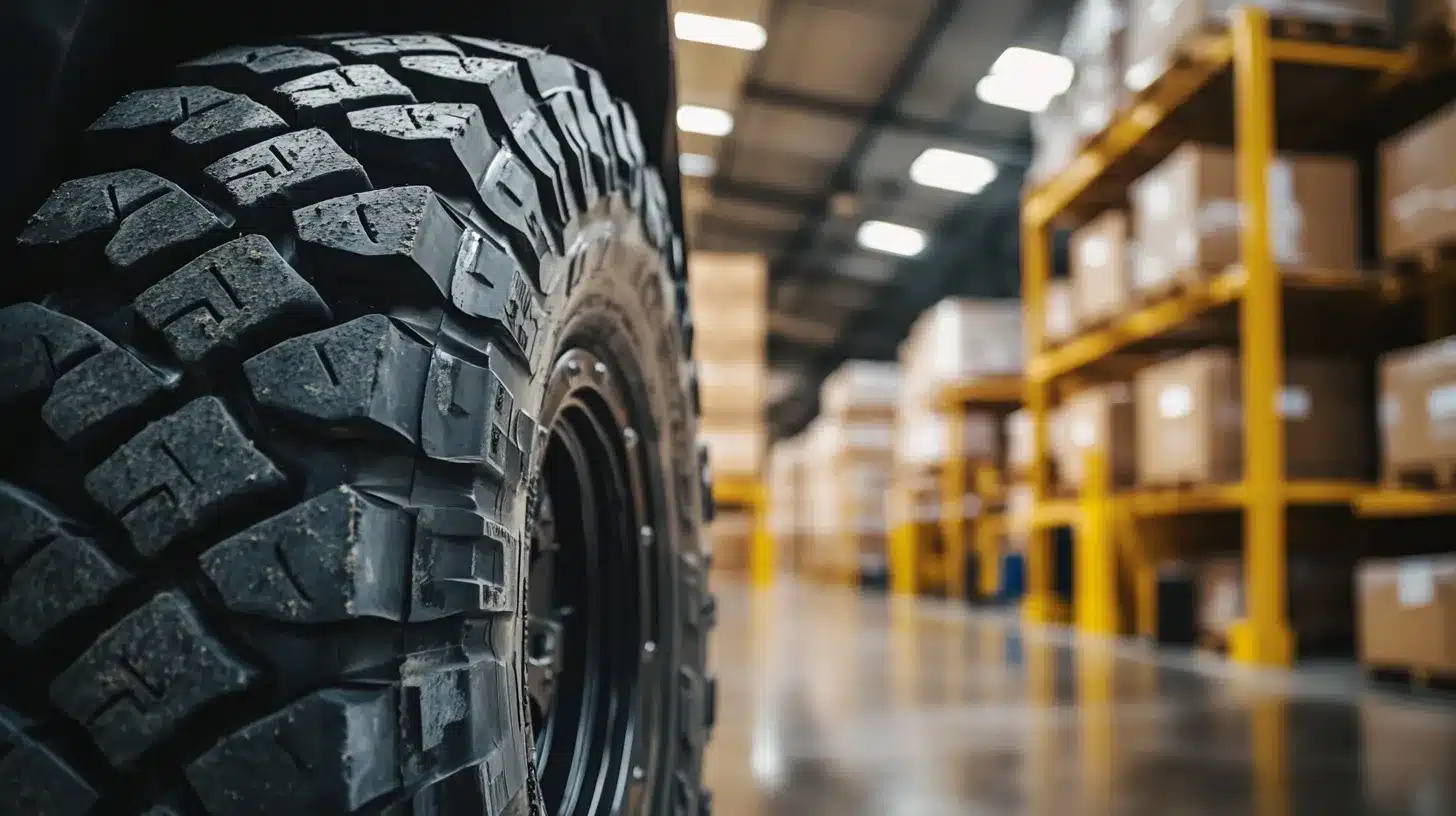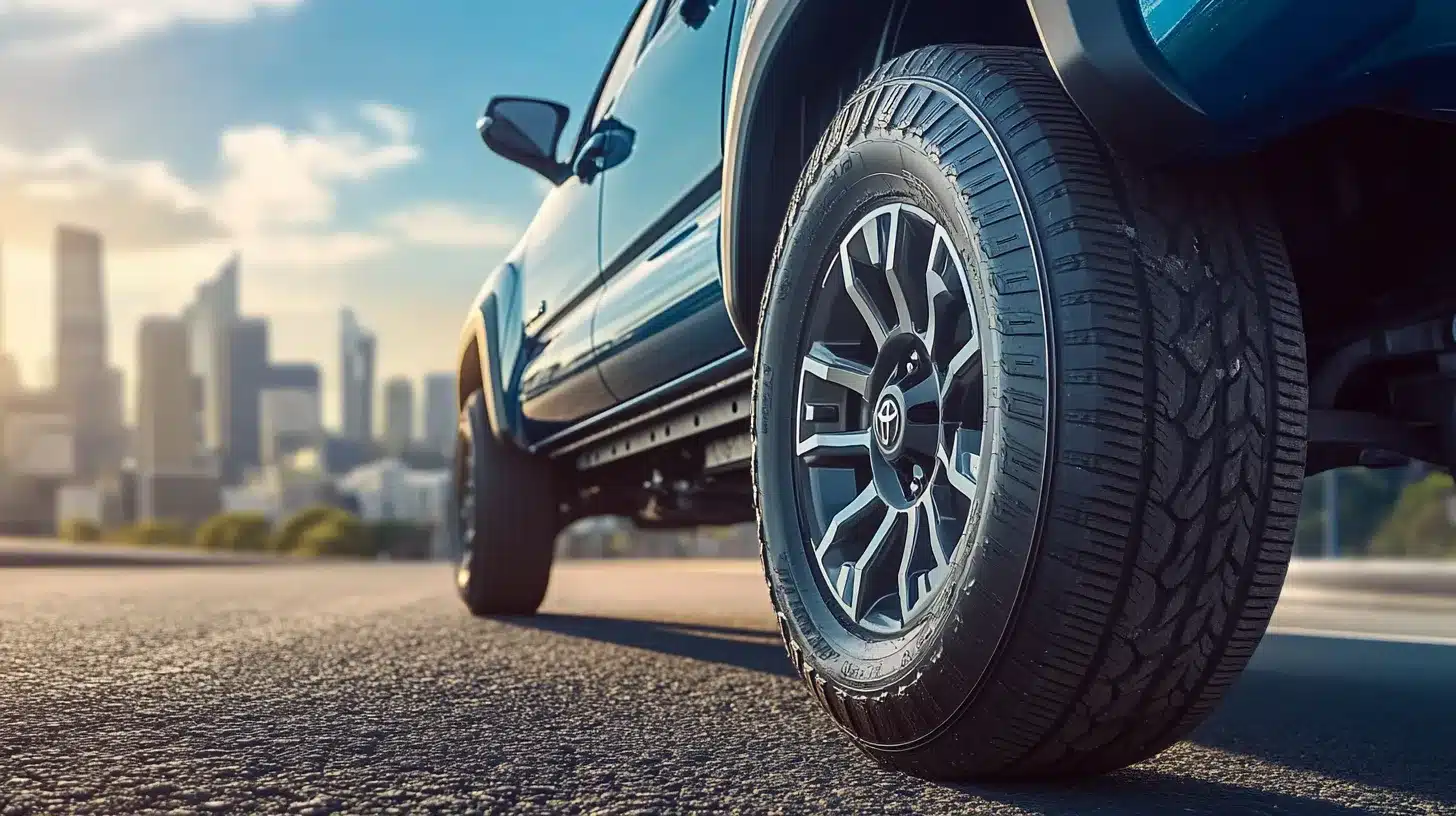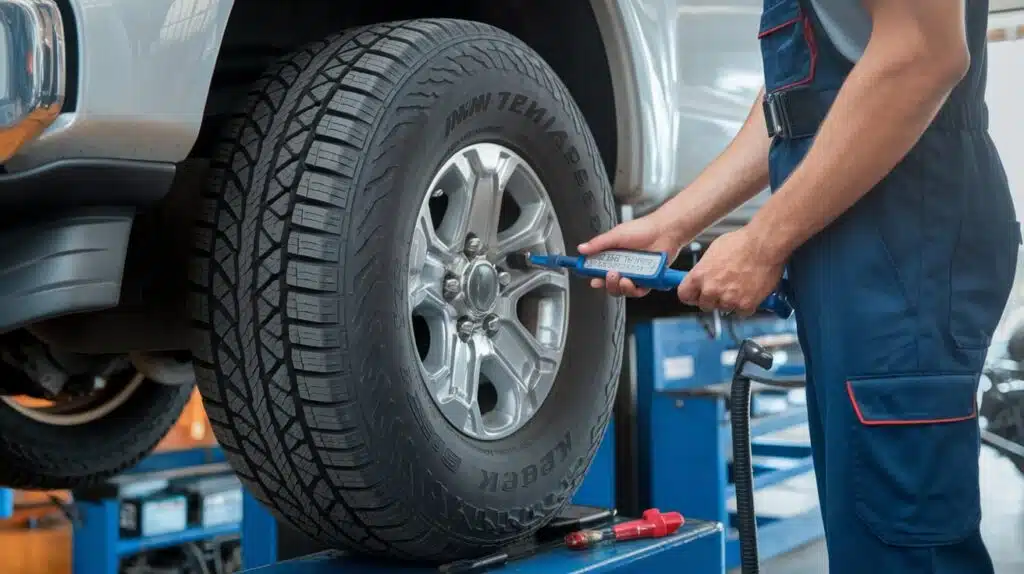Choosing the right tire size can be tricky, especially considering options like 285 tires.
These wider tires are known for affecting vehicle performance on various surfaces. The key is understanding how to assess their capabilities to make a smart decision.
Let’s explore 285 tires together. This guide will walk you through their world and offer clear insights into their performance traits.
We’ll look at important factors influencing their work, from road holding and stopping power to rough terrain ability and wear over time.
When you finish this read, you’ll understand how 285 tires perform in different situations.
This information will help you decide if they suit your vehicle and driving style. Get ready to learn all about 285 tire performance!
Whether you’re a seasoned driver or new to the world of tires, this guide will provide valuable insights to help you make an informed choice.
Let’s dive in and uncover what makes 285 tires stand out.
What Size Tire is 285?
285 tires are popular choices for larger vehicles such as SUVs and trucks.
The number 285 in the tire size refers to the width in millimeters, measured from sidewall to sidewall.
These tires offer a good balance of width and performance, making them suitable for both on-road driving and off-road adventures.
Size Specifications

When looking at a tire size like 285/70R17, each part of the code has a specific meaning:
- 285: This is the tire width in millimeters. It indicates a fairly wide tire, providing good stability and traction.
- 70: This number represents the aspect ratio. This means the tire’s sidewall height is 70% of its width. A higher aspect ratio generally results in a smoother ride, while a lower one often improves handling.
- R: This letter stands for Radial construction, the most common type of tire construction today.
- 17: The last number indicates the diameter of the wheel rim in inches. This 285 tire is designed to fit a 17-inch wheel.
285 tires can vary in diameter depending on the aspect ratio and intended use.
Key Performance Indicators for 285 Tires
Several key indicators should be considered when evaluating the performance of 285 tires.
These factors help determine how well the tires will perform in various conditions and how they might affect your vehicle’s overall performance.
1. Handling and Stability
- Cornering and High-Speed Performance: Assess grip and responsiveness in tight turns at various speeds. Look for minimal sidewall flex and stable behavior at highway speeds.
- Wet Weather Handling: Evaluate traction during acceleration, braking, and cornering on rain-soaked roads. Test vehicle control during sudden maneuvers in moist conditions.
- Load Impact: Observe changes in handling characteristics when the vehicle is fully loaded. Assess how the tires maintain stability and responsiveness under increased weight.
2. Traction and Grip
- Dry and Wet Road Performance: Measure the acceleration times and braking distances of dry and wet surfaces. Assess the tread pattern’s ability to channel water and resist hydroplaning.
- Winter and Off-Road Capability: If applicable, test acceleration, braking, and cornering on snow and ice. For all-terrain tires, evaluate traction on loose surfaces like gravel, sand, and mud.
- Traction Under Power: Assess how well the tires maintain grip during hard acceleration and cornering. Evaluate the balance between traction and controlled power delivery.
3. Ride Comfort and Noise
- Ride Quality: Assess the tire’s ability to absorb impacts from road imperfections. Evaluate overall ride smoothness across different surfaces and speeds.
- Noise Levels: Measure interior noise at various speeds and on different road textures. Compare how the tread pattern impacts noise levels relative to standard tire sizes.
- Vibration Control: Evaluate the tire’s ability to dampen road vibrations and how well it isolates the cabin from high-frequency disturbances.
4. Tire Longevity and Wear Patterns
- Tread Wear and Longevity: Monitor tread depth regularly to determine wear rate. Assess how driving conditions and tire compounds affect longevity.
- Wear Pattern Analysis: Inspect tires for uneven wear, indicating alignment or inflation issues. Evaluate how tire rotation impacts wear consistency and overall tire life.
- Environmental Impact: Consider how different climates and road conditions affect wear rates. Assess the tire’s resistance to cracking, chipping, or other environmental damage.
5. Impact on Fuel Efficiency
- Overall Fuel Economy: Compare city and highway driving fuel consumption with smaller tire sizes. Consider the impact of increased rotational mass and changes in aerodynamics.
- Rolling Resistance and Vehicle Dynamics: Assess how the wider tread of 285 tires affects rolling resistance and fuel consumption. Evaluate the balance between traction, stability, and efficiency.
- Gearing Effect: Analyze how the larger diameter of 285 tires affects the vehicle’s effective gearing. Measure the impact on engine RPM and fuel efficiency at cruising speeds.
6. Load Capacity
- Maximum Load Rating: Verify that the tire’s load index matches or exceeds your vehicle’s requirements, especially if you frequently carry heavy loads or tow trailers.
- Performance Under Load: Test how the tires handle when fully loaded. Look for minimal sidewall bulging and consistent handling characteristics.
- Heat Generation: Monitor heat build-up under heavy loads, as this can affect tire life and performance.
7. Heat Dissipation
- Long-Drive Performance: Monitor the tire’s performance during extended highway drives. Look for consistent handling and minimal changes in tire pressure as heat builds up.
- Tread Compound: Consider the tire’s rubber compound. Some are designed to operate efficiently at higher temperatures, which is beneficial for high-speed or heavy-load applications.
- Internal Structure: Tires with advanced internal structures, like heat-dissipating breaker belts, can maintain more consistent performance across various temperatures.
8. Aquaplaning Resistance
- Water Channeling: Examine the tire’s tread pattern. Look for wide, deep grooves that effectively channel water away from the contact patch.
- Speed Performance: Test the tire’s ability to maintain road contact at various speeds in wet conditions. The best tires will maintain grip even as speed increases.
- Tread Depth Impact: Assess how aquaplaning resistance changes as the tire wears. Some tires maintain wet performance better than others as tread depth decreases.
9. Braking Distance
- Surface Variety: Measure stopping distances on dry, wet, and low-traction surfaces like gravel. The best tires will provide consistently short stopping distances across all conditions.
- Speed Range: Compare braking performance at different speeds, from city driving to highway speeds. Look for tires that provide predictable and strong braking across all speed ranges.
- ABS Interaction: Evaluate how well the tire works with your vehicle’s anti-lock braking system. Some tires are designed to optimize ABS performance.
10. Sidewall Strength
- Impact Resistance: Test the sidewall’s ability to resist impacts from rocks or curbs without sustaining damage.
- Flexibility: Assess the sidewall’s performance when air pressure is lowered for off-road use. Look for a balance between flexibility for increased traction and stability to prevent the tire from unseating from the rim.
- Reinforcement: To prevent cuts and punctures, check for additional sidewall reinforcement, such as extra rubber layers or protective ribs.
Comprehensive Analysis of 285 Tire Performance
On-Road Performance

- Road Grip and Vehicle Control: 285 tires provide a wider contact patch, improving stability on paved roads. This increased footprint enhances grip during straight-line driving and cornering. The additional width positively influences cornering ability, especially at higher speeds. It allows for better weight distribution during turns, potentially reducing body roll.
- Braking Performance Factors: Tread design and rubber compound significantly impact braking performance. Advanced patterns with larger tread blocks and wider grooves can improve grip during sudden stops. On dry roads, the wider profile typically offers shorter stopping distances. Wet surface performance may vary based on the tire’s water dispersion capabilities.
Off-Road Performance

- Multi-Terrain Traction Analysis: 285 tires effectively handle various off-road terrains. In mud, the wider footprint prevents sinking, while aggressive treads maintain momentum. In sand, the increased surface area improves flotation. On gravel, these tires provide enhanced stability and traction.
- Resilience in Challenging Environments: Construction prioritizes durability against cuts and punctures. Reinforced sidewalls and robust tread compounds withstand impacts from rocks and obstacles. Regular rotation is crucial to distribute wear evenly and extend tire lifespan, especially given the uneven wear patterns common in off-road use.
- Versatility Across Driving Conditions: 285 tires balance on-road comfort with off-road capability, suitable for frequent transitions between paved roads and challenging terrains. This adaptability allows adequate performance in various environments, from daily commuting to weekend outdoor activities.
Comparing 285 Tire Models: Performance Breakdown
| Tire Model | On-Road Performance | Off-Road Performance | Tread Life | Noise Levels | Fuel Efficiency |
| BFGoodrich All-Terrain T/A KO2 | Good, with decent comfort and low noise | Excellent, with great traction in mud and rocks | Long-lasting, durable | Moderate, slightly noisy on highways | Moderate, average impact on fuel consumption |
| Michelin LTX A/T2 | Excellent, with smooth and quiet ride | Moderate, better suited for light off-roading | Very long, known for extended life | Low, quiet ride | High, low rolling resistance |
| Goodyear Wrangler DuraTrac | Good, but slightly noisy | Excellent, with a strong performance in snow and mud | Long-lasting, durable | Moderate, can be noisy on rough roads | Moderate, slightly higher rolling resistance |
| Nitto Terra Grappler G2 | It is very good, with balanced comfort and noise | Good, handles most off-road conditions well | Moderate to long-lasting | Moderate, balanced noise levels | Moderate, balanced for efficiency |
| Toyo Open Country A/T III | Good, with a focus on comfort | Very good, versatile for various terrains | Long-lasting, good durability | Moderate, designed for quiet operation | Moderate, average impact on fuel consumption |
Final Thoughts
So, are 285 tires the right choice for your vehicle?
These wider tires offer notable advantages after examining their performance across various conditions.
From improved road holding on city streets to tackling rough trails, 285s have much to offer.
But remember, no tire suits everyone perfectly. Your driving habits, vehicle type, and frequent routes all factor into this decision.
Consider those long highway trips, weekend outdoor excursions, and local weather patterns. Do 285s align with your specific needs?
Selecting tires is like choosing the right footwear for a long run – comfort and performance are equally important. With the insights from our analysis, you’re well-prepared to make a wise choice.
Whether you opt for 285s or explore other sizes, your informed decision will lead to enjoyable and safe driving experiences.
Are you ready to hit the road?


